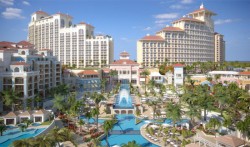And too the evidence of physical collapse is brutally apparent wherever we look; whether north, south, east, or west.
Everywhere we turn –whether on foot or by motorized transport- we see evidence to confirm some of our worse fears about the extent to which certain officials have allowed public properties to drop and drip into little more than expensive ruins. And yet again, there is evidence galore to support the conclusion that certain officials and other leaders have allowed some of our nation’s youth to become more and more feral by the day.
Take for example, the mobs of young people who daily pour onto the capital’s main thoroughfares. There they fight, cuss, carry on and otherwise demonstrate that their homes, churches and the government for that matter are failing them. If the lurid testimony of graffiti is to be believed, some in the ranks of these wild youth are cold, calculating, and without respect for either public or private property. For sure, there are very many of them who have no respect for themselves.
If this is the face of the future, this nation of ours is in trouble.
This nation’s roads are dropping to pieces. And so too are far too many of its people.
Our youth –in particular- are hurting.
Today, far too many of them are either bleeding or dying.
Both roads and people are in need of urgent maintenance, upgrading and renovation.
We make this observation as part of a broader commentary concerning the relationship between infrastructure and development. As we reflected on the matter at hand, our first inclination was to focus on the deterioration of this nation’s roads, ports and other physical infrastructure as a means of underscoring the obvious that a firm foundation is absolutely essential if growth is to be transformed into development.
But as we reflected more deeply, it occurred to us that equal attention must be focused on the growth and development of social infrastructure such as schools, churches, and other community based associations.
Perhaps even more so, focus must be placed on an examination of the fundamental role labor plays in the development process; and where –at times- deliberate efforts must be made to attract that extremely vital resource to the Bahamas.
The point here is that the government and its social partners should treat people as if they really mattered.
We sometimes wonder if they did.
Numbers Do Matter
One of the more curious aspects of life in The Bahamas is the extent to which what passes for public knowledge is in truth and in fact little more than warmed over nonsense. Take for example the now hoary idea that some how Bahamians who have migrated from the Out Islands want to return.
It is sometimes bandied about that New Providence is overpopulated. So on the one hand, this nation is supposedly bedeviled by two inter-related problems: depopulation of the Family Islands; and overpopulation of New Providence.
Nothing could be further from the truth.
Take note of the fact that even now there is an abundance of evidence to support the conclusion that numbers do matter when it comes to creating new townships and being able to do things efficiently. There are after all some things known as critical mass, capacity, and market forces.
Some things just cannot be achieved without the requisite numbers.
Numbers of people do matter, particularly when it comes to matching jobs with brains, hands and faces.
Examination of the facts would show that the Bahamas is actually a very paradoxical place. First, it is geographically speaking, a fairly large country, covering as it does some 100,000 square miles. Second, while fairly large in this regard, The Bahamas is home to a resident population of a little over three hundred thousand people, with more than half of them under the age of twenty five. Third, while its resident population is quite small, The Bahamas is visited by a guest count running well beyond four million visitors per year. This brings with it any number of very real stressors on available utilities. Fourth, it is important to note that most of the visitors to The Bahamas patronize the Nassau-Paradise Island Tourist Complex. This –in turn- has direct implications for development in other parts of the Bahamian archipelago.
We make these points in aid of another which is that the time may already be upon Bahamians when they may have to re-consider what they had come believe was the truth namely that there are Bahamians in sufficient numbers able, available, and willing to re-populate the Family Islands.
In this regard, it is interesting to note that the Rt. Hon. Perry G. Christie and his colleagues have bought so deeply into the idea-complex that somehow New Providence is overpopulated and the rest of the Bahamas is under populated, that they have vowed to putting in place certain so-called ‘aggressive strategies’ to reverse the depopulation and economic stagnation of our Family Island communities.
In a very recent commentary, we sought to make the point that crime hurts.
For sure, it does and it is very expensive.
Editorial from The Bahama Journal



